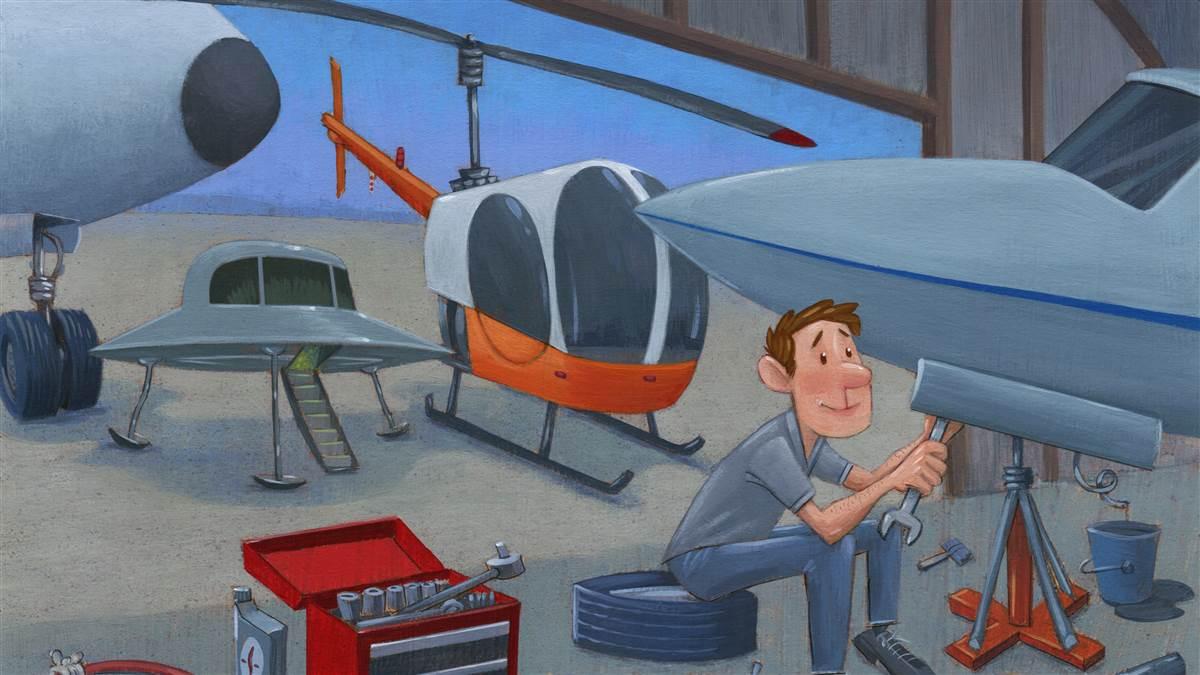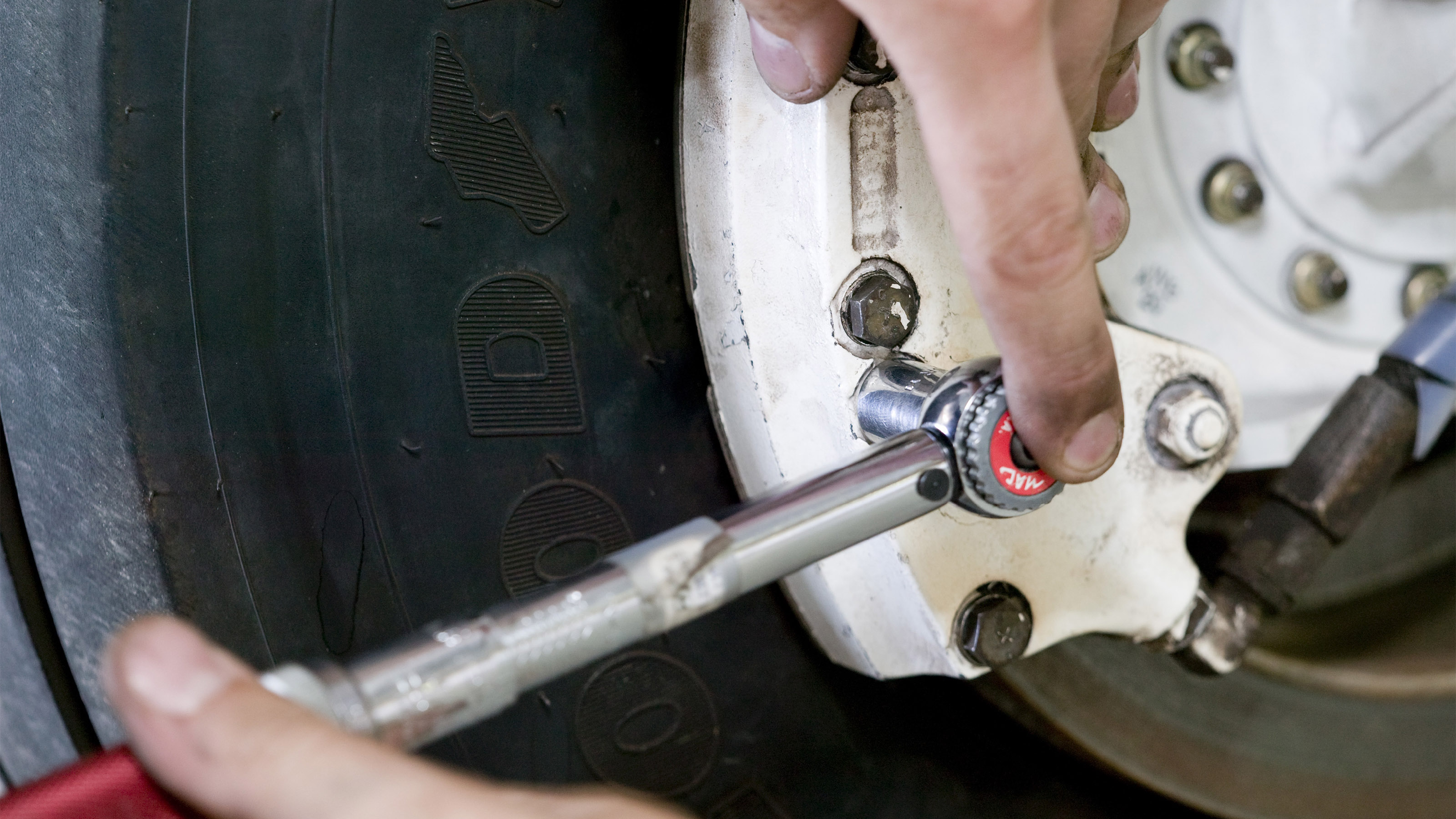Aircraft Mechanic Privileges And Limitations - The following table summarizes maintenance, repair and inspections for various categories of light sport aircraft, with details listed below.
FAA Regulatory Title 14 CFR 91.327 defines who can perform maintenance and inspections on S-LSAs. This regulation specifies that the manufacturer, not the FAA, determines all the details of who can do what with specific components. Here, manufacturers allow the owner to have some work done at either an official FAA repair station, or for some work, FAA-certified mechanics must be trained on the components by official manufacturers. An example of this is ROTAX engine maintenance.
Aircraft Mechanic Privileges And Limitations

Aircraft Special light sport aircraft (S-LSA) must be maintained by FAA-certified mechanics, except for certain preventive maintenance. This "Preventive Maintenance" can be performed by the owner/operator, but is specifically defined by the manufacturer in the "Maintenance and Inspection Procedures Manual" provided for each S-LSA. Usually, the owner has the right to check items and add fluids such as oil, coolant, and hydraulic fluid. Minor maintenance such as oil changes, spark plugs and tires may or may not be authorized by the owner/operator for the S-LSA.
Gavilan College Amt 101 Mechanic Certificate Worksheet #1
Aircraft Experimental Light-Sport Aircraft (E-LSA) is quite different. Title 14 of the FAA regulation CFR 91.319 does not require FAA certified mechanics to maintain E-LSA except in certain circumstances. Anyone can perform E-LSA maintenance. If you want to maintain the aircraft yourself, this can be a very good reason to purchase an e-LSA. An S-LSA can be converted to an E-LSA if necessary, but the aircraft cannot be leased or used for commercial training. If you have enough mechanical skills, you can do many repairs and maintenance yourself with practice. You may find you have all the tools you need to get the job done. If you are not comfortable with this type of work, you should consider how you can get this service and repair.
When purchasing a new LSA aircraft, you can usually have the dealer perform this task. When buying a used LSA, you're probably on your own because warranties rarely transfer and the original dealer usually has no obligation to back you up.
It should be noted that FAA certified standard category aircraft (classics such as some Piper Cubs, Talorcrafts, Liscombs, etc.) can only be serviced by A&P mechanics or FAA repair stations. The new LSA law did not change the maintenance requirements for these standard category airplanes.
All light sport aircraft (LSA) require an annual condition inspection each year by an FAA-approved service facility. For E-LSA, you can do this yourself if you take a 16 hour class for your aircraft category(s). If you choose not to take the course, you will need to find someone qualified to take this annual test.
Inspection Authorization Test Prep
The FAA has created a new LSA repair certificate called "Repairman - Light Sport Aircraft". This certificate has two ratings: LSA Repair Inspection and LSA Repair Maintenance.
This assessment allows you to perform an annual check on the status of the E-LSA you own. You must successfully complete a 16-hour FAA-approved course during your Special Class LSA test.
The Maintenance Rating (120 hours) is a commercial rating that allows you to maintain, repair and perform annual condition checks on all Specialized Light Sport Aircraft (S-LSA) and Condition Checks on Experimental Light Sport Aircraft (E-LSA). For hire within the class of aircraft specified on your certificate. The maintenance and repairs you can perform on the S-LSA are specifically approved in the aircraft manufacturer's maintenance manual.

A&P Airframe and Powerplant Mechanics are classic FAA certified mechanics who can work on LSA, standard category LSA and heavy aircraft that do not meet LSA standards. These are the mechanics who were authorized to maintain aircraft before the new LSA law made them inactive.
Airplane Light Sport Aircraft Maintenance, Repair, Inspection
First determine what type of aircraft you have and then use the table below to determine what type of light sport aircraft (LSA) and who can perform what types of maintenance and inspections.
E-LSA - Ultralights (fat/2 seat) converted before January 31, 2008 that meet the criteria of 21.191 (i) (1)
Note:* Simple "preventive maintenance" as directed by the manufacturer can be performed by the S-LSA owner and operator with a Sport Pilot Certificate or higher.
** Maintenance is a common term, but is not used here because the FAA uses the word "maintenance" to refer to a specific level of service required by properly trained mechanics.
Fall 2016 Course Schedule
*** The simple "preventive maintenance" specified in FAR Part 43 may be performed by the recreational pilot and the owner and operator of an aircraft with a higher level of certification. Members Learn More Save More - Get More From Becoming A Pilot - Click Here
I never wanted to be an aircraft and engine mechanic. What I really wanted was to be able to take care of my airplane without adult supervision.
Hell, I've been doing all the maintenance myself on my 1979 Cessna Turbo 310 for about 10 years. The various A&Ps who agreed to supervise me all agreed that I now know more about the maintenance aspects of my aircraft than any of them. I felt it was time to take full responsibility for my work and sign it.
![]()
What I need is an FAA grant that allows experimental hobbyist airplane builders to maintain their own machine, like a limited repairman certificate. I had no desire to throw wrenches at any plane but my own. Unfortunately, the FAA offers nothing comparable to the certified aircraft owner who wants to do their own maintenance.
A Day In The Life Of An Airline Mechanic
The FAA certainly doesn't make it easy to get an A&P certificate. Before you're even eligible to take the tests, you must have 30 months of full-time or 4,800 hours of part-time experience swinging wrenches on an airplane. To put this into perspective, the private pilot exam requires 40 hours of flight experience, the commercial exam requires 250 hours, and the airline pilot exam requires 1,500 hours. As a part-time mechanic with a serious, non-aviation day job, it took me 10 years to do 100 percent maintenance on a complex twin piston turbocharger to accumulate enough documented time to turn a wrench.
Then there are the exams. There are four: three multiple choice knowledge tests followed by an oral/practical exam with a designated mechanical examiner (DME). My oral/practical exam took all day and was far more difficult than any pilot checked ride I've ever taken (and as a multi-engine instrument pilot and flight instructor I've taken very few).
Achieving A&P is a great achievement and I am very proud of it. But as a long-time pilot and aircraft owner, but a novice A&P, I found some aspects of my newly acquired A&P status quite surprising.
In order to maintain my pilot privileges, I must undergo periodic training and regular evaluations. The FAA requires a CFI to undergo a flight review every two years (although I am a CFI myself) and maintain instrument currency. My insurance company requires me to complete annual simulator training in order to insure my aircraft. Doing all this costs me a lot of time and money, but I feel it is necessary and I look forward to these events. They keep me sharp and experienced.
Associate Degrees In Airframe And Powerplant Technology
Conversely, I was shocked to find that once I became A&P certified, there was no need for any refresher training as an FAR mechanic and no need to reassess my knowledge or skills. The FAA considers the mechanic certificate a lifetime license. There is a requirement (FAR 65.83) that I exercise the privileges of my mechanic certificate for at least six of the last 24 months—which is almost never enforced—but there is no requirement that someone else scrutinize my work. Knowledge can be rechecked or kept updated at any time.
Here's another thing that bothers me: As a pilot, my privileges are severely limited by my pilot certificates and ratings. If I want to fly instruments, I have to get an instrument rating. If I want to fly a twin, helicopter or glider, I need to get the appropriate category class ratings for it. If I want to fly a turbojet or larger airplane that weighs more than 12,500 pounds, I must get a specific type rating for each make and model I want to fly. Like, I think.
In contrast, my scope of support authority as an A&P is virtually unlimited. The FAA allows me to turn wrenches on everything from a Piper J–3 Cub, a Boeing 747 to a Blackhawk helicopter and a Goodyear airship (might not amuse Goodyear in a later context). Regardless of whether it is turbo or piston

Commercial pilot privileges and limitations, aircraft and powerplant mechanic, aircraft mechanic duties and responsibilities, ppl privileges and limitations, aircraft mechanic, aircraft operating limitations, private pilot privileges and limitations, experimental aircraft limitations, aircraft mechanic and service technician, aircraft and powerplant mechanic salary, light sport aircraft limitations, private pilot privileges and limitations explained

0 Comments